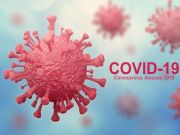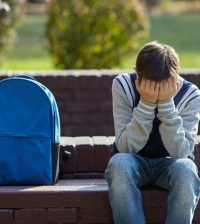- Fragments of Bird Flu Virus Found in U.S. Milk Supply
- There’s an ‘Epidemic’ of Loneliness Among U.S. Parents, Poll Finds
- Infertility Is Rising Among Young Married Women
- New Rules Mean 3.6 Million Americans Could Get Wegovy Via Medicare, Costing Billions
- ‘Dream It, Be It?’ Study Finds Teens Who Focus on Life Goals Often Succeed
- Trying ‘Magic Mushroom’ Drug to Ease Depression? It Has Side Effects
- $282 Billion: What Mental Illness Costs America Each Year
- Black, Hispanic Americans Getting Savvier About CPR
- Kids With Common Skin Conditions Face Stigma, Bullying
- Science Reveals How Aspirin Prevents Colon Cancer
Coronavirus Cases Ticking Upwards in Nearly a Dozen U.S. States

(HealthDay News) — A jump in coronavirus cases is being seen in nearly a dozen U.S. states, at least half of which reopened early, as the country’s coronavirus case count neared 1.7 million on Wednesday.
Though the overall national trend has been staying steady or dropping, Alabama, Florida, Georgia, South Carolina and Tennessee are some of the states seeing upticks, The New York Times reported. All five states were among the first to loosen social distancing restrictions.
To some degree, the increase in cases may be due to increased testing, but it also suggests that the virus’s spread in this country is nowhere near over, the Times reported.
In a sign that the mental health toll of the coronavirus pandemic is also on the rise, new Census Bureau data shows that nearly a third of Americans are showing signs of clinical anxiety or depression, the Washington Post reported Tuesday.
Meanwhile, safety concerns over a malaria drug that President Donald Trump has touted as a coronavirus treatment prompted the World Health Organization on Monday to remove the medication from a global trial of potential COVID-19 therapies.
Dr. Tedros Adhanom Ghebreyesus, the international health agency’s director-general, said the WHO decided to take a “pause” in testing hydroxychloroquine
after a study published last week in The Lancet medical journal found people who took the drug were more likely to die, the Times reported. Several other studies have found the medication has no benefit and could possibly harm COVID-19 patients.
Still, Trump said on Sunday he had just finished taking a two-week course of the malaria drug to guard against COVID-19 infection after two White House staffers tested positive for the coronavirus.
On Tuesday, pharmaceutical giant Merck jumped into the fight against the coronavirus, announcing two separate efforts to develop a vaccine and a partnership to develop a promising antiviral drug that can be taken as a pill, the Times reported.
Meanwhile, hopes for another drug being tested against coronavirus infection dimmed on Friday, after a major, new study found the drug on its own won’t be enough to significantly curb cases and deaths.
The study, published in the New England Journal of Medicine, found that, “given high mortality [of patients] despite the use of remdesivir, it is clear that treatment with an antiviral drug alone is not likely to be sufficient.”
It’s sobering news as the U.S. death toll neared 99,000 deaths.
Remdesivir alone is not enough
The remdesivir study involved 1,063 COVID-19 patients and was led by Dr. John Beigel and Dr. Clifford Lane at the National Institute of Allergy and Infectious Diseases (NIAID). The researchers found that the drug, delivered by infusion, did help ease the illness: Patients who got the antiviral recovered after an average of 11 days versus 15 days for those who hadn’t received it.
Patients who were so sick they required supplemental oxygen, but did not need a ventilator to breathe, appeared to benefit most from remdesivir.
But the difference in the overall death rate — 7.1% of patients on the drug vs. 11.9% of those who didn’t get it — did not reach statistical significance, the researchers added.
The study does suggest that early treatment works best. “Our findings highlight the need to identify COVID-19 cases and start antiviral treatment before the pulmonary disease progresses to require mechanical ventilation,” the researchers said.
Early evidence had suggested that remdesivir might help fight coronavirus illness, so the U.S. Food and Drug Administration gave it “emergency use authorization.” The new trial is significant because it is the first double-blind, placebo-controlled trial to test the drug in patients. Double blind means that neither doctors nor patients knew whether remdesivir or a placebo was being used in a particular case.
Already, combinations of remdesivir and other drugs are being tried, to see if dual-drug treatments might boost outcomes even more. For example, one federally funded clinical trial is combining remdesivir with a potent anti-inflammatory drug called baricitinib, while a trial from biotech firm CytoDyn is pairing it with an antiviral called leronlimab.
Vaccine efforts continue
Meanwhile, the search for an effective vaccine goes on. The U.S. Department of Health and Human Services (HHS) said Thursday it would provide up to $1.2 billion to the drug company AstraZeneca to develop a potential coronavirus vaccine from Oxford University, in England.
The fourth, and largest, vaccine research agreement funds a clinical trial of the potential vaccine in the United States this summer with about 30,000 volunteers, the Times reported.
The goal? To make at least 300 million doses that could be available as early as October, the HHS said in a statement.
However, many experts have said that the earliest an effective, mass-produced vaccine would be available won’t be until sometime next year, and billions of doses would be needed worldwide.
The United States has already agreed to provide up to $483 million to the biotech company Moderna and $500 million to Johnson & Johnson for their vaccine efforts. It is also providing $30 million to a virus vaccine effort led by the French company Sanofi, the Times reported.
Testing issues continue
According to a Times tally, the top five states in coronavirus cases as of Wednesday are: New York with nearly 369,000; New Jersey with almost 156,000; Illinois with over 113,000; California with nearly 100,000, and Massachusetts with more than 93,600.
Of course, testing will be key to further efforts to control the spread of the new coronavirus. But only about 3% of the population has been tested so far.
Meanwhile, a survey from the Washington Post reveals another dilemma: Though tests for the virus are finally becoming widely available, too few people are lining up to get them.
The poll of governors’ offices and state health departments found at least a dozen states where testing capacity outstrips the supply of patients.
Why aren’t more people getting tested? “Well, that’s the million-dollar question,” Utah Health Department spokesman Tom Hudachko told the Post. “It could be simply that people don’t want to be tested. It could be that people feel like they don’t need to be tested. It could be that people are so mildly symptomatic that they’re just not concerned that having a positive lab result would actually change their course in any meaningful way.”
Serious illness in kids
Meanwhile, troubling news has emerged from New York City: A total of 170 children have contracted a new, serious inflammatory syndrome that seems to be linked to COVID-19 infection, according to the city’s health department.
The CDC has confirmed the link, New York City Mayor Bill de Blasio said last week, adding that the city will work under the CDC’s latest definition of what it now calls multi-system inflammatory syndrome in children.
“The CDC has confirmed a link to COVID-19. This is important, we assumed it, but they have done additional research to 100 percent confirm it and released a national standard definition,” de Blasio told NBC New York.
The syndrome affects blood vessels and organs, and has symptoms similar to Kawasaki disease and toxic shock.
A small number of cases have been reported in other states, including New Jersey, California, Louisiana and Mississippi, the Times reported. At least 50 cases have been reported in European countries.
Americans still nervous about reopening
Across the country, reopening plans proceed, even as polling shows that most Americans fear that reopening will trigger a second wave of infections.
Of the 1,056 adults surveyed between May 14 and May 18, 83% said they’re at least somewhat concerned that easing restrictions will result in a new surge of infections, with 54% saying they’re very or extremely concerned, according to the Associated Press-NORAC Center for Public Affairs Research poll.
With reopening, it’s essential for people to return to self-quarantine if they are exposed to the virus, about 80% of respondents said.
About 6 in 10 said widespread testing for the coronavirus is necessary to resume public activities, along with requiring people to stay six feet apart in most places and to wear face masks when they’re near others outside their homes.
Nearly half of the respondents said it’s crucial for a vaccine to be available before public life resumes, while another third said that’s important, but not essential.
Nations grapple with pandemic
In Asia, where the coronavirus first struck, several countries are finally returning to a new normal.
In China, public officials were trying to test all 11 million residents in the city of Wuhan in the hopes they can extinguish any remaining cases of coronavirus in the pandemic’s original epicenter, the Post reported.
But a small cluster of cases in the northeastern province of Jilin has prompted officials to employ many of the strict lockdown measures that were used in Wuhan, the Times reported.
Elsewhere, the situation remains challenging. On Tuesday, the United Kingdom’s coronavirus death count passed 37,000, the second highest in the world, according to a Johns Hopkins University tally. Britain has now surpassed Italy, Spain and France for COVID-19 deaths in Europe. Still, Prime Minister Boris Johnson continued to move the country toward a full reopening.
Brazil is fast becoming the next hotspot in the coronavirus pandemic. By Wednesday, the South American country had reported over 24,512 deaths and over 391,000 confirmed infections, according to the Hopkins tally. Only the United States has more cases. On Monday, Trump issued a ban on all foreign travelers from Brazil because of the burgeoning number of COVID-19 cases in that country, CNN reported.
Cases are also spiking wildly in Russia: As of Wednesday, that country reported the world’s third-highest number of COVID-19 cases, the Hopkins tally showed. Russia now has more than 370,600 cases.
Worldwide, the number of reported infections passed 5.6 million on Wednesday, with almost 351,000 deaths, according to the Hopkins tally.
More information
The U.S. Centers for Disease Control and Prevention has more on the new coronavirus.
Source: HealthDay
Copyright © 2024 HealthDay. All rights reserved.










